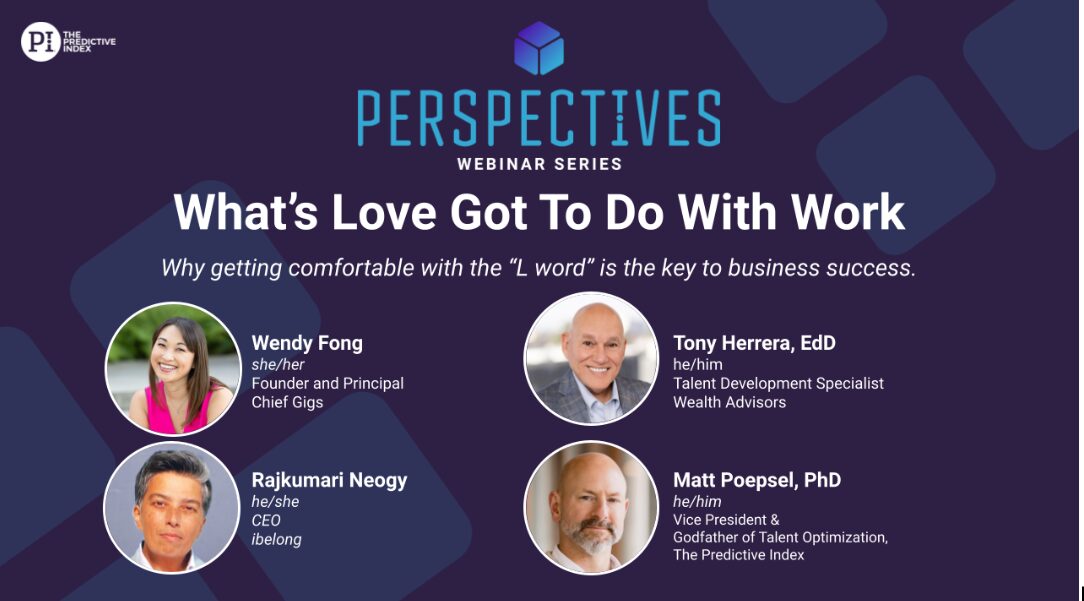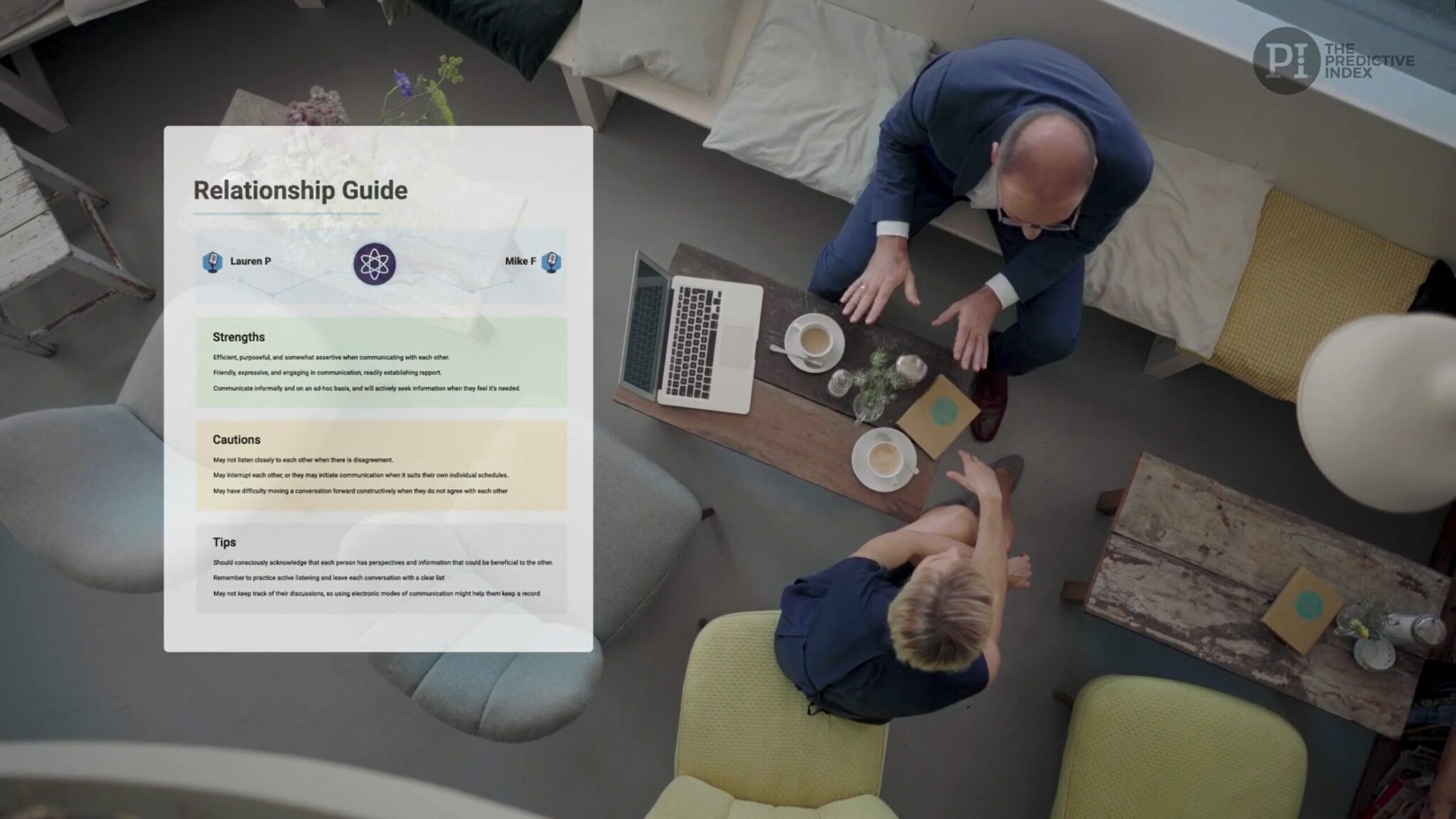When you’re working with your client on building a talent-optimized organization, hiring inevitably becomes a focal point. Aligning your client’s talent strategy with their business strategy means they’ll need to hire the right people—not just for the organization as it exists today, but also for the organization they want to grow into.
Though hiring can seem daunting, there’s a simple framework your clients can use to hire the right person for the right role. It’s called Head, Heart, Briefcase.
The head is highly predictive of workplace performance.
Think of the head as a person’s wiring: their cognition and their behaviors. When cognitive and behavioral data are collected and analyzed together, they’re the best predictors of workplace performance.
From a cognitive perspective, the head can tell a lot about the speed at which a candidate learns and their ability to manage complexity. Depending on the requirements of the job, how your client will weigh cognitive data in their hiring process will vary (e.g., Higher-level positions may require a higher cognitive ability than entry-level positions.)
When examining behavior, the head can provide insights into a candidate’s core behavioral drives. Those drives come with accompanying needs, and a candidate will behave in an expected way to meet those needs. For example, if a candidate is innately extraverted, they’ll likely feel a need to interact with others on a regular basis. In order to meet that need, they’ll exhibit behaviors like openness with others or being talkative.
Understanding these cognitive and behavioral elements—and how they align with the requirements of a job—will help your client to make informed hiring decisions.
The heart is what helps us understand motivation.
When hiring, it’s important to make sure candidate motivation and values align with those of the organization. The heart relates to a person’s ethics, their level of self-awareness, how much grit they possess, and whether they’ll be committed to the organization. Measuring values and motivation can be difficult, but a thorough interview process can help.
Encourage your client to evaluate for cultural fit during the interview process. In order to do this, make sure your client has a clear vision for their own culture and core values. A candidate may have the right behavioral and cognitive fit for a role, and their resume may look strong—but if they don’t share the same values as the organization, there’s a risk they may become disengaged or even toxic.
The briefcase is a summary of skills and experience.
In other words: It’s a resume. How much importance your client places on the robustness or alignment of the briefcase to the job requirements relies heavily on the job itself.
The best way to help your client understand the role of the briefcase in their hiring strategy is to work closely on defining and communicating job role requirements. This can be done by:
- Identifying the right stakeholders (i.e., hiring managers, peers, employees who are already successful in the role, etc.) and soliciting their input.
- Defining the job based on that stakeholder input.
- Writing a job advertisement that will resonate with the right applicants.
For some roles, skills can be taught, and so relevant experience might not weigh as heavily as the head or the heart. For other roles, like leadership positions, demonstrable success and experience will be essential. By walking your client through the above-listed activities, they’ll be able to make informed hiring decisions.
It all comes down to hiring the whole person.
It seems counterintuitive, but the simplest framework is also the framework that demands the most information. When your client hires for the whole person and weighs each of the facets in a way that makes the most sense for their organization, hiring becomes a strategic activity. Without the right strategy, hiring can’t effectively support—and may even detract from—business results. Hiring for the whole person increases your client’s odds of building a highly productive and engaged workforce.
Join 10,000 companies solving the most complex people problems with PI.
Hire the right people, inspire their best work, design dream teams, and sustain engagement for the long haul.









